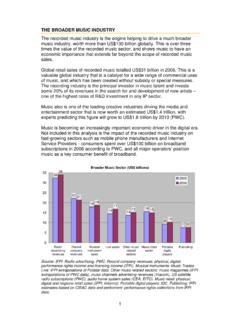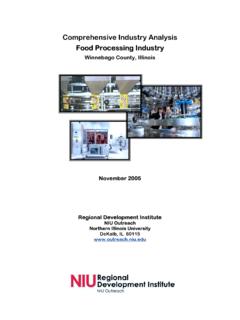Transcription of NUNN-WOLFOWITZ TASK FORCE REPORT: …
1 NUNN-WOLFOWITZ TASK FORCE REPORT: industry BEST PRACTICES REGARDING EXPORT COMPLIANCE PROGRAMSDate: July 25, 2000 NUNN-WOLFOWITZ TASK FORCE FORCE INVESTIGATION LAWS AND DEPARTMENT DEPARTMENT ASSETS CONTROL POLICY BEST PRACTICES RELATED TO 12 KEY AREAS OF the Actively Involved in Export Resources to Develop and Implement the and Ensuring the Effectiveness of the by a Senior Appropriate at Least Working Groups as Appropriate to Board of COMPLIANCE of of of COMPLIANCE INSTRUCTION COMPLIANCE INTRANET Training Feedback Encouragement to Use AND by Export Compliance Level Briefings (Board of Directors).. Level Training (Senior Management).. Training (All Employees).. Training (Employees Dealing with Export Issues).. Training (Export Compliance Personnel)..20 NUNN-WOLFOWITZ TASK FORCE and Update Emphasis on High-Risk APPLICATION License for License License License Layers of Review with One Central Liaison to Focused Controls on High-Risk Relationship with LICENSE License Administration Export Transmittal and Acknowledgements of License Assessments and FOREIGN NATIONAL Foreign Foreign Nationals for Export Licensing Appropriate License Technology Control Plans and Export-Related Recordkeeping Certain Communications with Foreign Certain Communications with the Business Unit Corporate Audit Follow-Up SUSPECTED Commitment to for Procedures for Handling for External Discipline for A: Chart summarizing best practices APPENDIX B: Glossary of termsNUNN-WOLFOWITZ TASK FORCE REPORT1I.
2 INTRODUCTIONOn December 1, 1999, the Board of Directors of Hughes Electronics Corporation (the Board ) approved the NUNN-WOLFOWITZ Task FORCE Charter (the Charter ). The Chartercommissions former Senator Sam Nunn and Ambassador Paul Wolfowitz, supported bypersonnel from King & Spalding (collectively the Task FORCE ),1 to make recommendations tothe Board concerning any changes in Hughes operations and procedures that may be necessaryor desirable to ensure that it has in place a best practices standard for complying with the letterand spirit of export control laws and regulations (the Mission ).To accomplish this Mission, the Task FORCE interviewed numerous industry andgovernment personnel involved in export compliance to determine industry best practices regarding export compliance. The Task FORCE and Hughes believe that the identification of these best practices may prove useful for other companies in their efforts to comply with exportcontrol report describes the Task FORCE investigation methodology, summarizes variousexport laws and regulations,2 and outlines industry best practices related to 12 key areas ofexport compliance: Management Commitment; Compliance Council; Compliance Personnel;Instruction Manuals; Intranet Site; Training and Education; License Application Process;Implementing License Authorizations; Handling Foreign National Issues; Recordkeeping;Audits; and Handling Suspected used in this report, the term best practices refers to those practices that generallyshould be incorporated into an export compliance program to maximize its effectiveness.
3 Thesestandards cannot be mechanically or rigidly applied, however, because companies vary greatly intheir location, size, employees, customers, business operations, organizational structure,corporate philosophy, and most importantly nature and scope of their export issues. Thus,the presence of any specific practice does not necessarily guarantee an effective complianceprogram, nor does the absence of a specific practice necessarily indicate an ineffective , each company must identify, from a management perspective, the best method toallocate its personnel, systems, and budget to satisfy business and export compliancerequirements. The Task FORCE is cognizant of the potentially significant resources that would benecessary to implement every best practice articulated herein, and that in some cases theimplementation of a best practice may be impractical or unnecessary. The application of thesestandards must be tailored to each company to produce the most effective compliance Task FORCE also notes that executive branch and judicial branch authorities stronglyencourage formalized compliance programs.
4 Both the Departments of State and Commerce haveacknowledged that compliance programs may justify the mitigation of civil penalties in certaincases. Similarly, the Federal Sentencing Guidelines have designated compliance programs as 1 The Task FORCE was subsequently expanded to include William Schneider, President ofInternational Planning Services, The Task FORCE does not purport to interpret the Export Administration Regulations,International Traffic in Arms Regulations, or any other A chart summarizing the best practices related to these 12 areas is attached at Appendix TASK FORCE REPORT2one factor that may reduce criminal penalties imposed by the government for non-compliancewith export laws. In the widely-cited case In re Caremark International Derivative Litigation,4which involved the settlement of shareholder claims against individual board members for failureto prevent health care fraud, the adoption of a compliance program was instrumental in thecourt s finding that the directors would probably not have been found personally liable had thecase gone to trial.
5 The court stated that it is important that the board exercise a good faithjudgment that the corporation s information and reporting system is in concept and designadequate to assure the board that appropriate information will come to its attention in a timelymanner as a matter of ordinary operations, so that it may satisfy its responsibility. 5 Thus, effective compliance programs can serve as evidence of senior management s goodfaith and reasonable attempts to comply with the law. More importantly, export controlcompliance will help to promote and protect not only personal and corporate interests, but national security, foreign policy, and commercial TASK FORCE INVESTIGATION METHODOLOGYThe Task FORCE developed and implemented a four-pronged approach in determiningindustry best practices in export compliance. First, the Task FORCE reviewed relevant exportcontrol laws and regulations, focusing primarily on the regulations administered by the State andCommerce , the Task FORCE interviewed various personnel from the Commerce Department,State Department, the Defense Department and the Customs Service the government agenciesprimarily responsible for administering and enforcing the export control laws applicable toHughes.
6 The Task FORCE also reviewed the Defense Trade Compliance Programs Guide published by the State Department s Office of Defense Trade Controls and the ExportManagement System Guidelines published by the Commerce Department s Bureau of , the Task FORCE interviewed export compliance personnel and representatives fromHughes and other industry leaders and organizations, including The Boeing Company, LockheedMartin Corporation, General Electric Company, Litton Industries, Hewlett-Packard Company,Northrop-Grumman, the Aerospace Industries Association, the Society for International Affairs,and the Satellite industry , the Task FORCE met with other individuals whom the Task FORCE believed hadpotentially valuable input. For example, the Task FORCE met with RepresentativeChristopher Cox, who chaired the Select Committee on National Security andMilitary/Commercial Concerns with the People s Republic of China; Doug Feith, partner at thelaw firm of Feith Clark McFadden, partner at the law firm of Dewey Ballentine; DanPoneman, partner at the law firm of Hogan and Larry Christensen and Jim Wilson ofVastera, an international trade consulting company.
7 4 698 959 (Del. Ch. 1996).5 Id. at TASK FORCE REPORT3 III. EXPORT LAWS AND REGULATIONSA. STATE DEPARTMENT REGULATIONSU nder the Arms Export Control Act ( AECA ), the Office of Defense Trade Controls( ODTC ) at the State Department is charged with implementing the International Traffic inArms Regulations ( ITAR ). The ITAR regulate the export of defense articles and defenseservices from the United States to any foreign destination or to any foreign person, whetherlocated in the United States or abroad. A defense article is defined as any item or technicaldata designated in the United States Munitions List ( USML ).6 A defense service, on theother hand, is defined as [t]he furnishing of assistance (including training) to foreign persons,whether in the United States or abroad in the design, development, engineering, manufacture,production, assembly, testing, repair, maintenance, modification, operation, demilitarization,destruction, processing or use of defense articles.
8 7 The ITAR do not define assistance. ITAR controls are based on national security/nonproliferation and foreign policyconsiderations. There is considerable overlap among the policies underlying the ITAR and theExport Administration Regulations administered by the Commerce Department. Nevertheless,the objective of ITAR is to limit access to and use of munitions and related services and data as opposed to dual-use items and technologies to purposes and end-users that serve the foreignpolicy interests of the United States. As a result, the State Department is generally consideredmuch less sensitive to commercial considerations than the Commerce company desiring to export a defense article or provide a defense service must applyfor a license from ODTC. License applications submitted to the State Department are generallyreviewed by the State and Defense Departments; there is consultation, where appropriate, withthe intelligence community and other interagency applications can be: (1) approved; (2) denied; or (3) returned without action.
9 Theapproval may be limited in scope by provisos, limitations or requirements appended to theapproval by the reviewing agencies. The State Department considers numerous factors inmaking a licensing determination but places primary importance on foreign policy and nationalsecurity concerns, as required by Department personnel advised the Task FORCE that in Fiscal Year 1999, ODTC received approximately 45,000 applications and had 14 non-supervisory employees, threesupervisory employees, and four military detailees to process license applications. As a result ofadditional appropriations in Fiscal Year 1999 and Fiscal Year 2000, the total number of non-supervisory employees in ODTC s Licensing Branch will grow to 30. ODTC officials believethe staff increase will permit them to achieve nearly a factor of four reduction in case processingtime (from 98 calendar days in Fiscal Year 1999 to 24 days by the end of Fiscal Year 2000).
10 6 22 22 GAO/T-NSIAD-98-208 (June 1998) ( GAO Report ), GAO Report, TASK FORCE REPORT4 State Department personnel further advised the Task FORCE that the total personnel complementfor Fiscal Year 2000 will be March 15, 1999, the Fiscal Year 1999 National Defense Authorization Act10transferred all satellites and related items from the Commerce Control List to the USML, therebytransferring license jurisdiction for these items from Commerce to State. This transfer ofjurisdiction has had a significant impact on satellite manufacturers, components/parts providers,and service providers. Under the Commerce regime, many satellite products and services fellunder exceptions and did not require licenses for exports. Under the State regime, however,licenses are required for most transactions involving satellite products and July 1, 2000, the State Department changed the ITAR to simplify proceduresfor obtaining export licenses with respect to commercial communications satellite components,systems, parts, and technical data, provided that the export is confirmed to an approved list offoreign aerospace firms located within the territories of allies for use in an approvedcommercial communications satellite COMMERCE DEPARTMENT REGULATIONSThe Export Administration Regulations ( EAR ), promulgated under the authority of theExport Administration Act ( EAA ),11 are generally focused on the control of exports of dual-use commodities ( , commodities that have both military and commercial applications).

